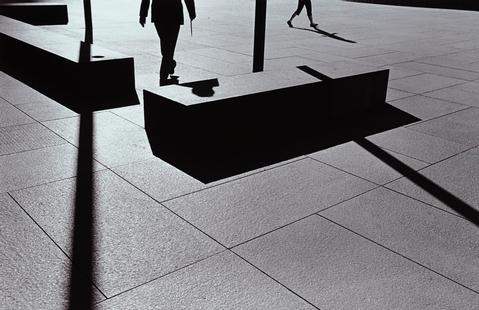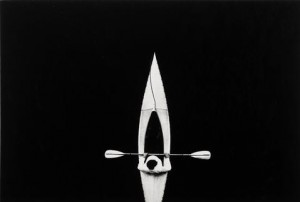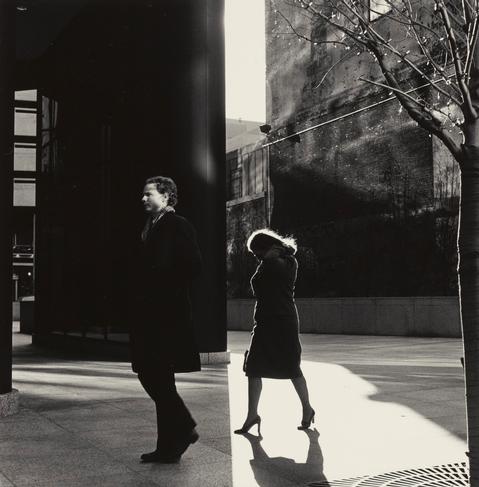City Whispers: Los Angeles, negative 1981; print 2006 The Nelson-Atkins Museum of Art, Gift of the Hall Family Foundation
The image above is the one Metzker photo with which I was familiar before heading into the Getty Center’s new show The Photography of Ray K. Metzger and The Institute of Design, which opened last week and will be on view through February 2013. It’s a gorgeous show that both educates the viewer about the artist’s process, the craft of black and white photography and the influential school that played an important role in both Metzker’s work and the work of his contemporaries. The Getty’s photography department, in conjunction with The Nelson-Atkins Museum of Kansas City (where the Metzker archive is preserved thanks in part to the generosity of the Hall Family Foundation) has done a great job exploring the history of the medium in shows such as this, because they consider how artists influence each other, and take care in explaining these subtleties to the uninitiated gallery visitor.
Frankfurt, 1961 The Nelson Atkins Museum of Art, Gift of Hallmark Cards, Inc.
Metzker started as a street photographer and his early work shows a fascination with light and shade and the way that people on the street intersect with the landscape – in particular city landscapes which he grouped together and called City Whispers – which made for ripe territory for exploration with black and white film. The early street scenes, from Philadelphia and Chicago are textbook studies of light and shadow and Metzker had a particular fondness for graphic repetition.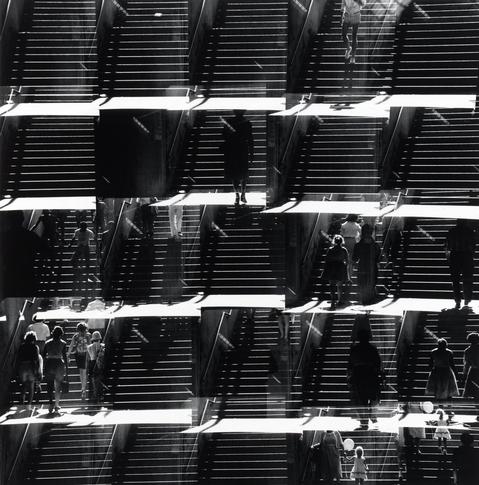
Chicago, 1959 The Nelson-Atkins Museum of Art, Gift of Hallmark Cards, Inc.
Eventually, he became one of the first students at the Chicago Institute of Design, an art school founded by avant-garde Europeans importing the theories of the German Bauhaus, organized around László Moholy-Nagy. Metzker studied under prestigious American instructors (Harry Callahan, Aaron Sisken) and learned the fundamentals of graphic design, which he applied with ease to his street experience and sensibility to produce even more stunning graphic images. It was this merger of a facility with street photography with an elegant sense of design that brings power to his work, and it’s all displayed chronologically so the viewer can understand his progress. I particularly loved his Composites; in these rare works, he manipulated his prints (cutting and repositioning them) to create unique works of art. (This is interesting because most classic black and white images were produced multiple times in various editions. The Composites are completely unique, as a painting is, and several of them are on display in this exhibit.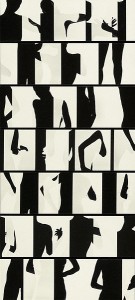 Composites: Nude, negatives 1966, prints 1984, Ray K. Metzker, gelatin silver prints. The J. Paul Getty Museum
Composites: Nude, negatives 1966, prints 1984, Ray K. Metzker, gelatin silver prints. The J. Paul Getty Museum
You can click through these images online to see one of the Composites, but in my option, the best ones are on the wall at the Getty.
Metzker played around with other fun Photo 101 type techniques such as playing with the focal lens of his camera and placing simple objects in front of the lens to disturb the viewer’s experience, and creating couplets by grouping a few disparate images together in a print. Kids can clearly understand how these simple tricks can produce effectively novel images, something that’s really fun with the all the apps that are available on their smart phones.
City Whispers: Philadelphia, 1983, Ray K. Metzker, gelatin silver print. The J. Paul Getty Museum
In this image, Metzker’s many accomplishments come to play when he simply snapped this image while on the street. He didn’t sit around waiting for the figures and sunlight to line-up — he just knew a good shot when he saw one and was ready to point his camera and capture it for all to appreciate.
In a few other galleries, the work of his teachers are on display (the Harry Callahan shots are my favorites) as well as the work of other students at the Institute of Art during his time in school. And, you can enjoy the landscapes he shot later in life, images that quite literally soften in tone (after he fell in love…!)

